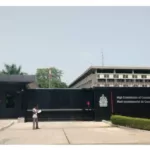In a recent development, Samajwadi Party MP Shafiqur Rahman Barq has raised questions regarding the Bihar government’s decision to release the caste census survey report at this particular juncture. Barq, who represents the Lok Sabha constituency of Sambhal, voiced his concerns, stating, “What was the need for these figures at this time? They are looking at the elections next year and doing these activities. The nation wants service, development, education, and a better Prime Minister. None of this is there. They should be asked if you are running the country, what have you done for its development.”
The Nitish Kumar government’s release of the Bihar caste census survey has revealed that the Other Backward Classes (OBC) and Extreme Backward Classes (EBC) together constitute a substantial 63 percent of the state’s population. Out of Bihar’s total population of 13.07 crore, EBCs constitute the largest social segment at 36 percent, followed closely by OBCs at 27.13 percent.
Yadavs, the OBC group to which Deputy Chief Minister Tejashwi Yadav belongs, emerge as the largest population segment, representing 14.27 percent of the total. Additionally, Dalits, also known as the Scheduled Castes, account for 19.65 percent of the state’s population, which also includes nearly 22 lakh (1.68 percent) individuals belonging to the Scheduled Tribes.
The “unreserved” category, often associated with the “upper castes” that historically dominated politics until the Mandal wave of the 1990s, comprises 15.52 percent of the total population. The survey further underscores that Bihar’s population is predominantly Hindu, with the Hindu community making up a significant 81.99 percent of the total, followed by Muslims at 17.70 percent. Other religious minorities, including Christians, Sikhs, Jains, and those adhering to various faiths or non-believers, collectively constitute less than one percent of the total population.
Bihar Chief Minister Nitish Kumar has announced plans to convene a meeting involving all nine political parties with electoral representation in the state legislature. During this meeting, the collected facts and figures from the census will be shared and discussed.







